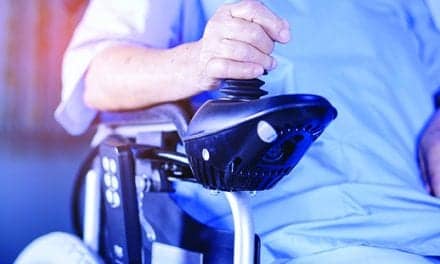Advances in neurofeedback techniques aiming to improve the signal-to-noise ratio of the brain activity underyling thoughts may hold promise for brain rehabilitation, experts say. A news story from Virginia Tech Carilion Research Institute notes that according to work conducted by Stephen LaConte, PhD, assistant professor and his colleagues, the signal-to-noise ratio of the brain activity underlying thoughts can be “remastered.”
Laconte and his team specialize in real-time functional magnetic resonance imaging. The Institute reports that the researchers used whole-brain, classifier-based real-time functional magnetic resonance imaging in an effort to understand the neural keystones of brain-computer interface control. During the study, the team reportedly asked two dozen participants to control a visual interface by silently counting numbers at fast and slow rates.
For half the tasks, the participants were told to use their thoughts to control the movement of the needle on the device they were observing. For additional required tasks, participants were required to watch only the needle. The results revealed a feedback effect, the story states. Participants who were in control of the needle achieved a better whole-brain signal-to-noise ratio than those who simply watched the needle move.
Participants performing the counting task without feedback did fairly well, LaConte says. “But when they were doing it with feedback, we saw increases in the signal-to-noise ratio of the entire brain. This improved clarity could mean that the signal was sharpening, the noise was dropping, or both. I suspect the brain was becoming less noisy, allowing the subject to concentrate on the task at hand,” LaConte explains.
Study results also indicated that the act of controlling the computer-brain interface led to an increased classification accuracy, which corresponded with improvements in the whole brain-to-signal ratio. The enhanced signal-to-noise ratio may hold implications in brain rehabilitation, LaConte adds. When patients undergoing real-time brain scans receive feedback on their own brain activity patterns, LaConte says, the patients are able to devise ways to exert greater control over mental processes.
“This, in turn, gives them the opportunity to aid in their own healing. Ultimately, we want to use this effect to find better ways to treat brain injuries and psychiatric and neurological disorders,” LaConte states.
Michael Friedlander, PhD, executive director of the Virginia Tech Carilion Research Institute, a neuroscientist who specializes in brain plasticity, designates the findings as a milestone in the development of noninvasive brain imaging approaches with potential for neurorehabilitation.
“This research carries implications for people whose brains have been damaged, such as through traumatic injury or stroke, in ways that effect the motor system—how they walk, move an arm, or speak, for example,” Friedlander says.
The study appears in the Proceedings of the National Academy of Sciences in the article, “Brain-computer interfaces increase whole-brain signal to noise.”
[Source: Virginia Tech Carilion Research Institute]




